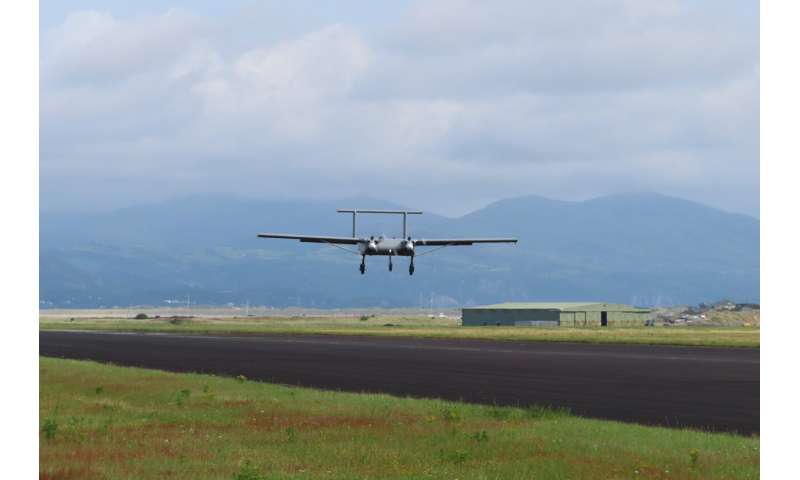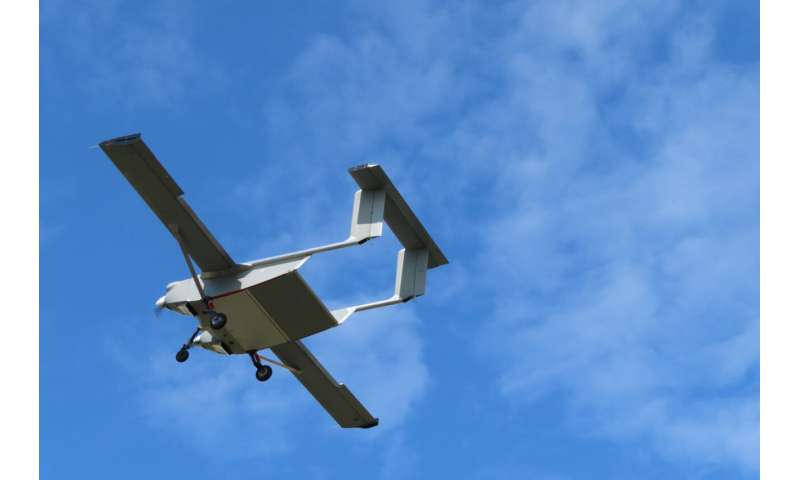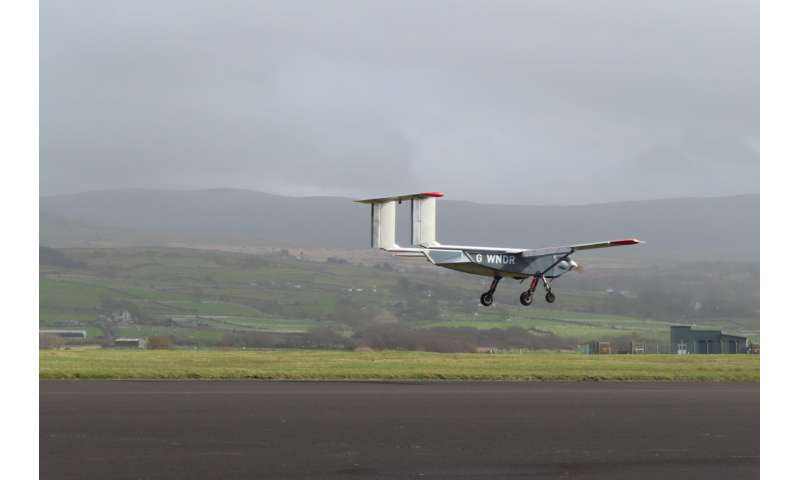A new pilotless plane is ready for testing in Antarctica

A new, state-of-the-art autonomous drone capable of carrying a wide range of science sensors is heading south for its inaugural flight on the icy continent this Antarctic field season from January to March 2024. This forms part of British Antarctic Survey (BAS)'s plans to automate its science platforms and reach net zero carbon emissions by 2040.
Designed for extreme environments like Antarctica, the Windracers ULTRA UAV (uncrewed aerial vehicle) is a fully autonomous, twin-engine, 10-meter fixed-winged aircraft, capable of carrying 100 kg of cargo or sensors up to 1,000 km. It can take off, fly and land safely with minimal ground operator oversight thanks to its sophisticated autopilot system Masterless, developed and patented by Distributed Avionics.
Incorporating a high level of redundancy, the ULTRA can continue to fly even if one of the engines or components is damaged or fails. The flexible platform can also be configured as required to carry a range of sensors for collecting scientific data. Furthermore, using AI-driven SWARM technology, multiple autonomous drones can organize themselves as a single unified system—for example, to collect science data across a larger area.
The ground-breaking project is part of Innovate UK's Future Flight 3 Challenge pilot program called "Protecting environments with uncrewed aerial vehicle swarms," aimed at demonstrating how advanced drone technology can be used to gather environmental data in Antarctica.
British Antarctic Survey's (BAS) Interim Science Director Dr. Dominic Hodgson says BAS is exploring new ways of doing science in Antarctica as part of its new science strategy and Net Zero Carbon Strategy.
He states, "At BAS, we are changing our approach to science by increasing the use of autonomous platforms, such as UAVs and autonomous underwater vehicles (AUVs), to collect data. By deploying unpiloted platforms, such as the Windracers ULTRA, BAS has the potential to scale up airborne science and accelerate research, given the dramatic increases in flight time and geographic coverage that these enable'".
"UAV drones will allow us to gather new and a broader range of science data in an effective, lower-carbon and lower cost manner than traditional crewed aviation—with the added benefit of greater levels of safety."

Under this season's testing phase, the Windracers ULTRA will be deployed to:
- survey protected environmentally sensitive areas and assess the marine food chain (krill) using cameras;
- investigate tectonic structures with magnetic and gravity sensors;
- assess glaciological structures using airborne radar; and
- test an atmospheric turbulence probe for studies of boundary layer processes coupling ocean and atmosphere.
Carl Robinson, who manages BAS's use of UAVs, says, "The Windracers ULTRA is an ideal platform for integrating science sensors onto, because it has a large floor area, volume and 200W of power available for science instruments, which means a wide range of science sensor payloads can be flown.
"The ULTRA's range and speed, and systems redundancy are well suited to the polar environment and make for an attractive science platform. The removable floor can be quickly replaced with floors dedicated for various science sensors, allowing for a quick change between science applications. Using the easily configurable mission plans, our scientists can quickly plan flights to collect science data in areas of interest, allowing flexibility to collect their science data."

"Our autonomous aircraft is able to collect a broad range of critical science data in places that are difficult and dangerous to reach. This is key for the future of research in high interest areas including climate change," says Stephen Wright, Co-Founder and Chairman of Windracers.
"We are proud to be working with British Antarctic Survey and are keen to support scientific research wherever possible with our high endurance and high payload platform. Future UAV science missions could involve air-dropping marine sensors, investigating the flow of water beneath ice shelves, or investigating areas inaccessible with traditional platforms in Antarctica and beyond."
Provided by British Antarctic Survey